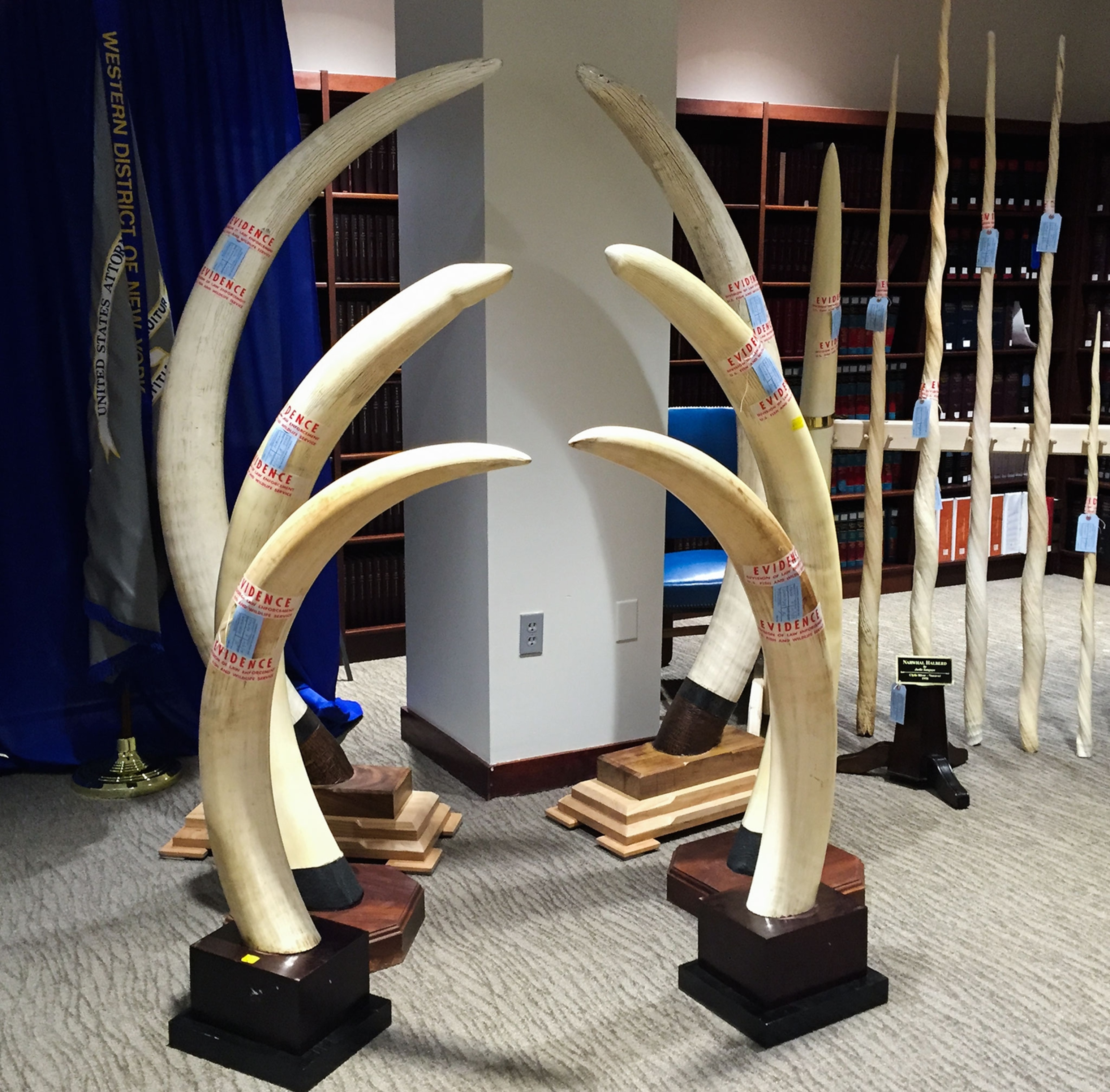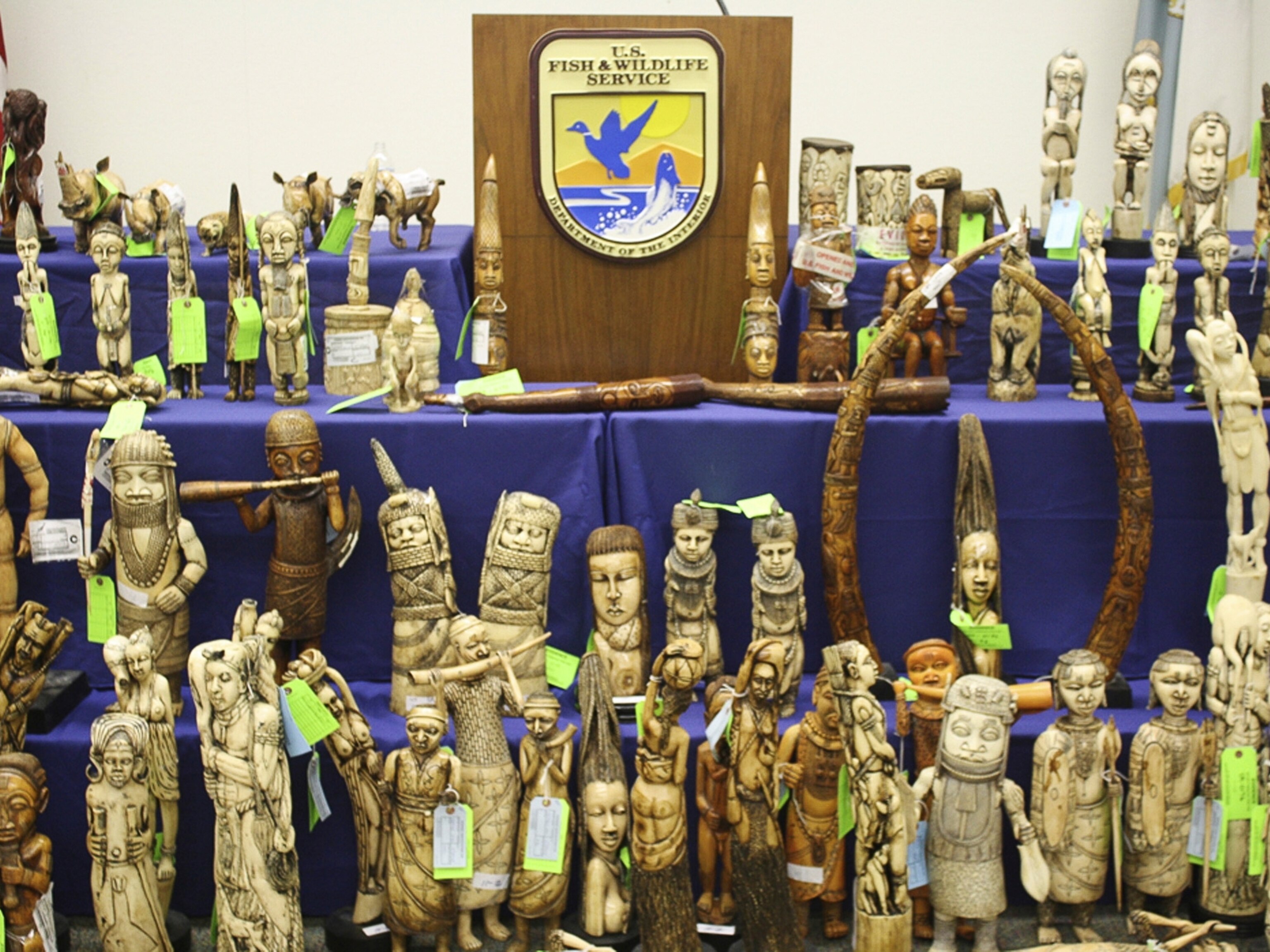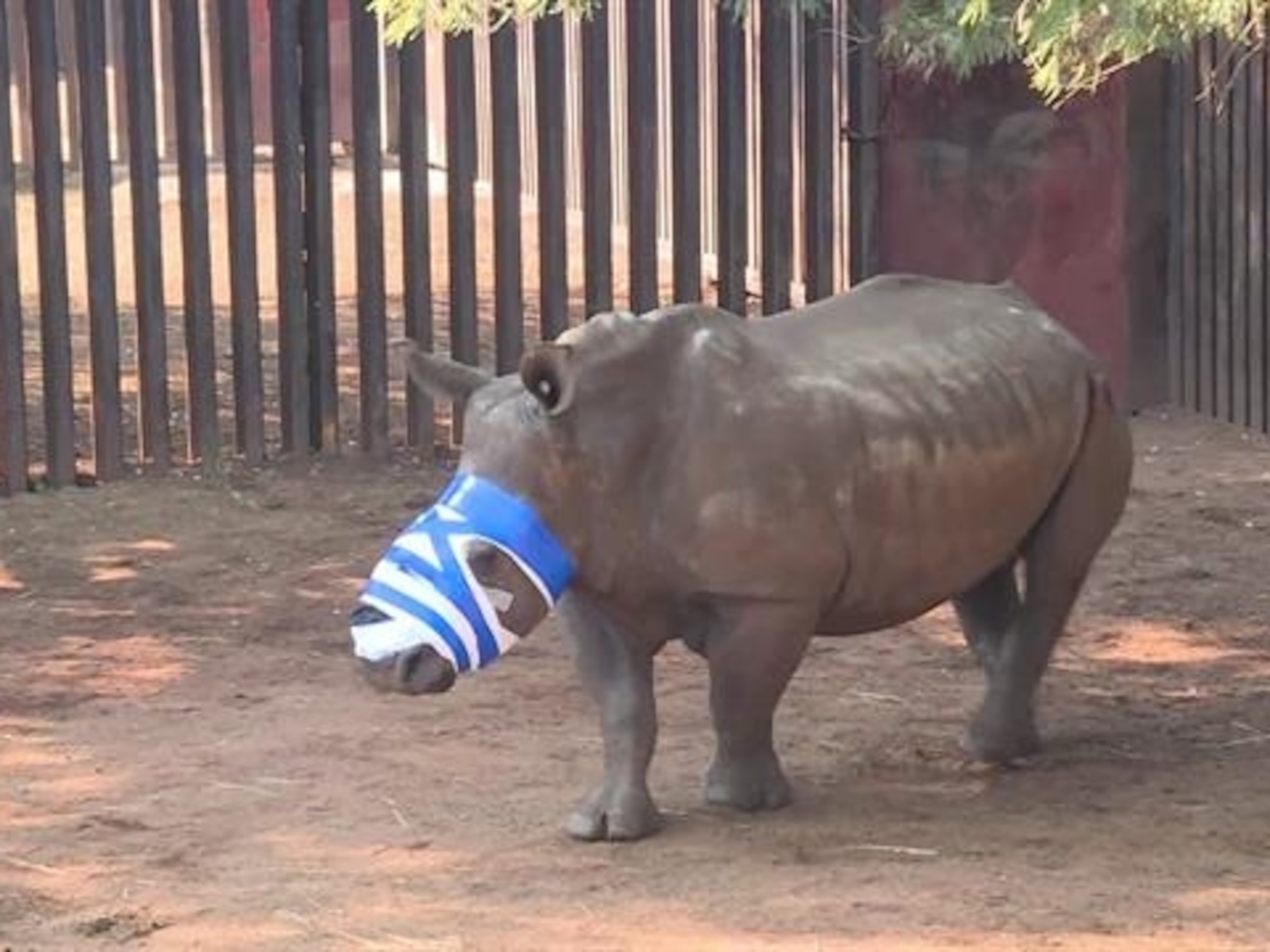
U.S. Antiques Dealer Pleads Guilty to Smuggling Ivory
Ferdinand Krizan was also found to be in possession of dozens of illegal wildlife products.
When 77-year old New Yorker Ferdinand Krizan loaded up the pair of elephant tusks into his car in Ontario, Canada, he knew what he was about to do was illegal. An antiques dealer based about an hour southwest of Buffalo in Franklin, New York, Krizan was aware that importing elephant ivory without an Endangered Species Act permit could get him in a lot of trouble. Still, on November 28, 2014, he hid them in his car and drove across the Niagara Falls Rainbow Bridge into the U.S.
Now Krizan faces up to five years in prison and a $250,000 fine for violating the Lacey Act, a law that makes it a crime to trade in illegally acquired wildlife products. It turns out the Canadian auction house he bought the tusks from, IEGOR Hôtel des encans de Montréal, had become the target of Canadian investigators. When they conducted a raid, Krizan showed up in paperwork as a buyer. They alerted U.S. authorities, and an investigation into Krizan’s dealings began. On Wednesday, Krizan pleaded guilty to trafficking the tusks, valued at $141,000.
It turns out this pair of tusks wasn’t the first time Krizan trafficked in protected wildlife. The investigation, conducted by the U.S. Fish and Wildlife Service’s Office of Law Enforcement and the New York State Department of Environmental Conservation, determined he illegally traded in approximately $350,000 worth of wildlife products, according to Assistant U.S. Attorney Aaron Mango, who is handling the case. They include:
- a narwhal tusk
- two elephant tusks
- a carved elephant ivory art object
- an elephant tusk
- a hippo ivory carving
- an elephant ivory musician carving
- an bronze and elephant ivory sosoon figurine
- an elephant ivory triptych
- a carved coral figurine
- approximately 100 ivory carvings
"We often read about the plight of elephants and the illegal ivory trade in other countries, but the truth is that much of the blame falls to the insatiable demand for wildlife and wildlife products within our own borders," said Honora Gordon, FWS special agent. "It is our hope that cases like this help to reduce that demand."
Poachers kill some 30,000 elephants every year in order to feed the global demand for ivory. International trade in ivory has been banned since 1990 under the Convention on International Trade in Endangered Species of Wild Fauna and Flora, the body that regulates the international wildlife trade. And the U.S. itself bans ivory imports for commercial purposes (there are some exceptions for non-commercial purposes, such as sport hunting trophies and legally acquired ivory that was removed from the wild before 1976, is carved, and is a household possession). He imported them illegally and then sold them—which was also illegal because they’d been brought into the U.S. unlawfully.
At one point, Krizan did hold a permit from the state of New York to trade in ivory (New York has since banned the ivory trade within the state), but it had expired by the time he transported the tusks from Canada to the U.S.
In the plea, he admits to knowing what he was doing was illegal. Many of the products he sold illegally, including the pair of tusks he is currently charged with trafficking, have been recovered from buyers, Mango said. U.S. attorneys in other districts are looking into pursuing charges.
Krizan surrendered his passport and was released on his own recognizance. He will appear before a judge on May 19 for sentencing.
This story was produced by National Geographic’s Special Investigations Unit, which focuses on wildlife crime and is made possible by grants from the BAND Foundation and the Woodtiger Fund. Read more stories from the SIU on Wildlife Watch. Send tips, feedback and story ideas to ngwildlife@ngs.org.
This story was produced by National Geographic’s Special Investigations Unit, which focuses on wildlife crime and is made possible by grants from the BAND Foundation and the Woodtiger Fund. Read more stories from the SIU on Wildlife Watch. Send tips, feedback, and story ideas to ngwildlife@natgeo.com.





